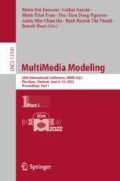Abstract
Ultrasound prostate segmentation is challenging due to the low contrast of transrectal ultrasound (TRUS) images and the presence of imaging artifacts such as speckle and shadow regions. In this work, we propose an improved principal curve-based & differential evolution-based ultrasound prostate segmentation method (H-SegMod) based on an interpretable-guided mathematical model. Comparing with existing related studies, H-SegMod has three main merits and contributions: (1) The characteristic of the principal curve on automatically approaching the center of the dataset is utilized by our proposed H-SegMod. (2) When acquiring the data sequences, we use the principal curve-based constraint closed polygonal segment model, which uses different initialization, normalization, and vertex filtering methods. (3) We propose a mathematical map model (realized by differential evolution-based neural network) to describe the smooth prostate contour represented by the output of neural network (i.e., optimized vertices) so that it can match the ground truth contour. Compared with the traditional differential evolution method, we add different mutation steps and loop constraint conditions. Both quantitative and qualitative evaluation studies on a clinical prostate dataset show that our method achieves better segmentation than many state-of-the-art methods.
Access this chapter
Tax calculation will be finalised at checkout
Purchases are for personal use only
References
Wang, Y., et al.: Deep attentive features for prostate segmentation in 3D transrectal ultrasound. IEEE Trans. Med. Imaging 38, 2768–2778 (2019)
Yan, K., Wang, X., Kim, J., Khadra, M., Fulham, M., Feng, D.: A propagation-DNN: deep combination learning of multi-level features for MR prostate segmentation. Comput Methods Programs Biomed. 170, 11–21 (2019)
Rundo, L., et al.: USE-Net: incorporating squeeze-and-excitation blocks into U-Net for prostate zonal segmentation of multi-institutional MRI datasets. Neurocomputing 365, 31–43 (2019)
Zhu, Y., et al.: Fully automatic segmentation on prostate MR images based on cascaded fully convolution network. J. Magn. Reson. Imaging 49, 1149–1156 (2019)
Shahedi, M., Halicek, M., Guo, R., Zhang, G., Schuster, D.S., Fei, B.: A semiautomatic segmentation method for prostate in CT images using local texture classification and statistical shape modeling. Med. Phys. 45, 2527–2541 (2018)
Li, X., Wang, X., Dai, Y.: adaptive energy weight based active contour model for robust medical image segmentation. J. Sig. Proc. Syst. 90(3), 449–465 (2017). https://doi.org/10.1007/s11265-017-1257-3
Peng, T., Xu, T.C., Wang, Y., Li, F.: Deep Belief Network and Closed Polygonal Line for Lung Segmentation in Chest Radiographs. Comput. J. (2020)
Li, Z., Zhang, Y., Gong, H., Liu, G., Li, W., Tang, X.: An automatic and efficient coronary arteries extraction method in CT angiographies. Biomed. Sig. Process Control. 36, 221–233 (2017)
Dai, B., Wu, X., Bu, W.: Optic disc segmentation based on variational model with multiple energies. Pattern Recogn. 64, 226–235 (2017)
Alickovic, E., Subasi, A.: Medical decision support system for diagnosis of heart arrhythmia using DWT and random forests classifier. J. Med. Syst. 40(4), 1–12 (2016). https://doi.org/10.1007/s10916-016-0467-8
Peng, T., Wang, Y., Xu, T.C., Shi, L., Jiang, J., Zhu, S.: Detection of lung contour with closed principal curve and machine learning. J. Digit. Imaging 31(4), 520–533 (2018). https://doi.org/10.1007/s10278-018-0058-y
Peng, T., et al.: Hybrid automatic lung segmentation on chest CT scans. IEEE Access. 8, 73293–73306 (2020)
Peng, T., Wang, Y., Xu, T.C., Chen, X.: Segmentation of lung in chest radiographs using hull and closed polygonal line method. IEEE Access. 7, 137794–137810 (2019)
Junping, Z., Dewang, C., Kruger, U.: Adaptive constraint K-segment principal curves for intelligent transportation systems. IEEE Trans. Intell. Transport. Syst. 9, 666–677 (2008)
Chen, P.: Effects of normalization on the entropy-based TOPSIS method. Expert Syst. Appl. 136, 33–41 (2019)
Kabir, W., Ahmad, M.O., Swamy, M.N.S.: A novel normalization technique for multimodal biometric systems. In: 2015 IEEE 58th International Midwest Symposium on Circuits and Systems (MWSCAS), pp. 1–4. IEEE, Fort Collins, CO, USA (2015)
Kégl, B., Krzyzak, A.: Piecewise linear skeletonization using principal curves. IEEE Trans. Pattern Anal. Mach. Intell. 24, 59–74 (2002)
Zeng, Y.-R., Zeng, Y., Choi, B., Wang, L.: Multifactor-influenced energy consumption forecasting using enhanced back-propagation neural network. Energy 127, 381–396 (2017)
Storn, R.: Differential evolution – a simple and effcient heuristic for global optimization over continuous spaces. J. Glob. Optim. 11, 341–359 (1997)
Kim, D.W., Kim, M.S., Lee, J., Park, P.: Adaptive learning-rate backpropagation neural network algorithm based on the minimization of mean-square deviation for impulsive noises. IEEE Access. 8, 98018–98026 (2020)
Ronneberger, O., Fischer, P., Brox, T.: U-Net: convolutional networks for biomedical image segmentation. In: Navab, N., Hornegger, J., Wells, W.M., Frangi, A.F. (eds.) MICCAI 2015. LNCS, vol. 9351, pp. 234–241. Springer, Cham (2015). https://doi.org/10.1007/978-3-319-24574-4_28
He, K., Gkioxari, G., Dollar, P., Girshick, R.: Mask R-CNN. In: Proceedings of the IEEE International Conference on Computer Vision, pp. 2961–2969. Venice, Italy (2017)
Acknowledgement
The authors acknowledge the funding support from the National Institute of Health (R01 EB027898).
Author information
Authors and Affiliations
Corresponding author
Editor information
Editors and Affiliations
Rights and permissions
Copyright information
© 2022 Springer Nature Switzerland AG
About this paper
Cite this paper
Peng, T., Tang, C., Wang, J. (2022). Prostate Segmentation of Ultrasound Images Based on Interpretable-Guided Mathematical Model. In: Þór Jónsson, B., et al. MultiMedia Modeling. MMM 2022. Lecture Notes in Computer Science, vol 13141. Springer, Cham. https://doi.org/10.1007/978-3-030-98358-1_14
Download citation
DOI: https://doi.org/10.1007/978-3-030-98358-1_14
Published:
Publisher Name: Springer, Cham
Print ISBN: 978-3-030-98357-4
Online ISBN: 978-3-030-98358-1
eBook Packages: Computer ScienceComputer Science (R0)

